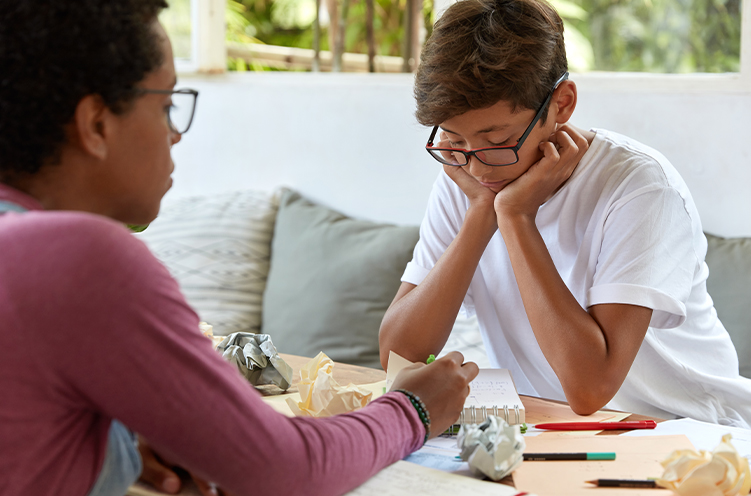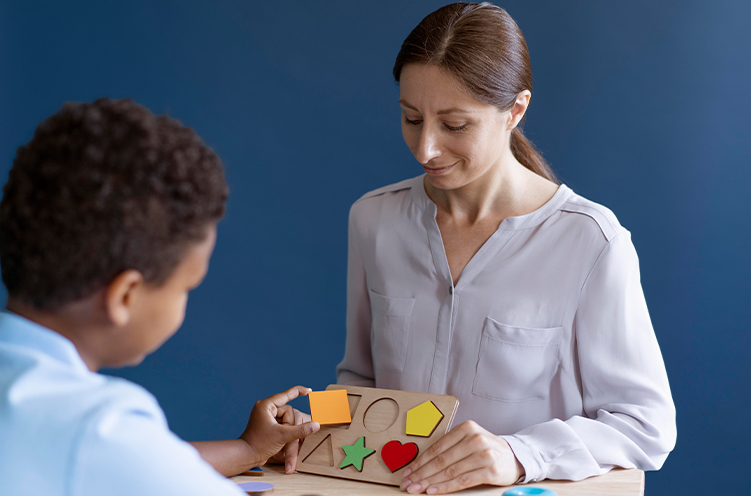

Virtual Therapy In Ontario, Canada In Person Therapy in Hamilton & London

Did you know that between 8-13% of Canadians will have experienced social anxiety within their lifetime (Statistics Canada, 2015)? Social anxiety, sometimes referred to as social phobia, is an intense, persistent fear of being watched and judged by others. It also tends to be more common among those who are autistic, Indigenous, or female (Statistics Canada, 2015; Kisely et al., 2017) and usually starts in late childhood or early teens (Kessler et al., 2005). In fact, 90% of social anxiety cases occur before the age of 23 years old.
Symptoms of social anxiety are often mistaken for extreme shyness or generalized anxiety. However, unlike shyness, social anxiety causes intense distress or negatively impacts peoples’ normal routines, performance at work or school, relationships, and social life. Generalized anxiety involves having anxieties and fears about a range of topics, whereas in social anxiety, the fear and anxiety are limited to social situations where there is a chance of being judged by others. Social anxiety is often intensified by fears of doing something embarrassing, showing anxiety symptoms, or accidentally offending others.
Behavioural symptoms of social anxiety can include avoidance of certain situations (such as public speaking or going to school) or social interactions (such as meeting unfamiliar people at a party). Behavioural symptoms can also look like being less expressive in front of others, reduced eye contact, closed body language (e.g. head down or facing away from others), and stumbling over words.
Physical symptoms can include blushing, rapid heartbeat, shortness of breath, sweating, shaking, and dizziness. Other physical symptoms might include stomachaches, queasiness, headaches, dry mouth, and nausea. Some people with social anxiety can also experience panic attacks.
Cognitive symptoms can include a distorted self-view, anticipating negative interactions, paying greater attention to negative social cues (rather than positive ones), and interpreting ambiguous social cues as negative. It is also common for people with social anxiety to ruminate after social interactions and situations.
In children, social anxiety can look like crying, freezing, tantrums, or an inability to speak in social situations (also called selective mutism).
Studies have shown that social anxiety can be genetically inherited from family members and that environmental factors can increase susceptibility to social anxiety (Hettema et al., 2001). For example, emotional and physical abuse, negative interactions with peers, over-controlling parents, and having an anxious or avoidant attachment style are environmental factors that can all increase people’s susceptibility to developing social anxiety (Norton & Abbott, 2015).

Cognitive-behavioural therapy is considered the most effective form of treatment for social anxiety disorder (David et al., 2018). Cognitive-behavioural therapy can reduce the frequency and intensity of fear and/or anxiety of social situations while enhancing day-to-day functioning through cognitive restructuring, exposure and response prevention, and social skills training.
Cognitive restructuring is a technique that was originally developed by psychologist Albert Ellis and later refined by Aaron Beck, the founder of modern cognitive-behavioural therapy. In cognitive restructuring, your therapist will help you identify, challenge, and change negative thought patterns contributing to your fear of social situations. For instance, a client has the thought, “People will see that I’m tense and nervous and think I’m strange,” before social events. A therapist might help them reframe this thought in the following terms, “My anxiety isn’t nearly as obvious to others as it is to me” so they have less anxiety about social events.
Combining cognitive restructuring with exposure and response prevention can further reduce social anxiety symptoms. Exposure and response prevention was developed in the 1970s by Stanley Rachan, who built off of earlier behavioural theories (e.g. classic conditioning by Ivan Pavlov). Prior to exposure, your therapist will assist you with creating a hierarchy of fears (i.e. fears listed in order of intensity). Once this list is made, you and the therapist will take small steps in session to face these fears, perhaps through role-playing, imagining the feared social scenario taking place, or interoception – which involves mimicking the physical symptoms of social anxiety in the body (e.g. sweating, hyperventilating, etc.).
Although exposure may seem overwhelming at first, you might find comfort in knowing that the anxiety symptoms peak right before exposure and then dissipate rather quickly. Also, an appropriately trained therapist will never put you in a situation you don’t want to be in or feel you can’t handle. Instead, they will work with you to find a way to break the exposure into more manageable pieces to ensure your success.
Exposure and response prevention works by decreasing the activation of the overactive amygdala in the brain to the feared social situation, eventually reducing the intensity of your fight or flight response and allowing your brain the time to send signals to the slower but more rational part of the brain for processing (i.e. the prefrontal cortex).
Some, but not all, individuals with social anxiety are anxious because they are unsure how to respond in certain social situations or have anxiety standing up for themselves. In these cases, social skills training (SST) is an additional measure that can be integrated into the treatment plan alongside cognitive restructuring, exposure, or both to teach clients more effective verbal and non-verbal communication skills. This technique was born out of Albert Bandura’s social learning theory, which proposes that seeing another person (such as your therapist) model behaviour can provide a learning experience for the client. After effective communication skills are modelled, you and your therapist might practice using them together through role play, which is also referred to as behavioural rehearsal. Your therapist may also assist you by providing constructive feedback during or after the role play. Depending on the client’s unique needs, social skills training may involve learning and practicing basic conversational skills, assertiveness, making friends, or public speaking.
Regarding basic conversational skills, your therapist might model and coach you on how to make eye contact, smile, initiate conversations, comment on things you notice about others, order at a restaurant, end conversations, or make phone calls. Such skills training can be especially beneficial to people with autism, who have a more challenging time responding to social cues.
Dialectical-behavioural therapy (DBT) and dialectical-behavioural therapy skills training may also be an effective treatment for social anxiety (Villalongo Andino et al., 2024). Many individuals with social anxiety tend to have unrealistically high social standards and underestimate their social skills, which creates a discrepancy that leads to distress (Hoffman, 2007). DBT includes interpersonal effectiveness skills training, which can help people with social anxiety adjust their social standards and improve their confidence in their social skills.
People with social anxiety also tend to be self-conscious and ruminate. Mindfulness skills, which are another component of DBT, can help reduce self-consciousness and worry about lack of control by teaching clients how to observe thoughts, emotions, and physical sensations (e.g. shaking and blushing) in the present moment without judgement during social situations (Villalongo Andino et al., 2024). Mindfulness can also reduce rumination after social interactions. Tackling rumination is especially important, as it leads to negative self-beliefs and reinforces social anxiety by keeping our attention on past negative social interactions.
Emotional regulation can be another challenge for people with social anxiety. DBT includes emotional regulation skills, such as “opposite action” which help the client identify whether an emotion (e.g fear) is justified and face the anxiety-inducing social situation (e.g. having to meet new people). This technique also works by helping clients identify their action urge (e.g. to run away) and engage in the opposite behaviour of what their emotions are telling them to do in the social situation (e.g. approach the group of new people with a smile). By using the opposite action, the client’s responses to fear of the social situation is broadened, providing a greater sense of control over their emotional responses to anxiety-provoking situations.
Lastly, individuals with social anxiety tend to have lower distress tolerance (Keough et al., 2010). This sensitivity to distress leads them to avoid social interactions and situations and/or rely on safety behaviours. CBT can help in this area as well as it includes distress tolerance skills training – which teaches clients how to tolerate painful events, urges, and emotions and minimize suffering through radical acceptance of the current situation (Villalongo Andino et al., 2024). Distress tolerance allows individuals to tolerate anxiety without avoiding the social situation, which (like exposure and response prevention) decreases amygdala activity, eventually reducing social anxiety symptoms.
No matter what kind of therapy you choose, having a positive relationship with your therapist is important. Believe it or not, the relationship between the client and therapist makes up 30% of therapy’s effectiveness (Horvath et al., 2011)! This statistic holds true no matter what kind of therapy you choose – whether it is CBT or DBT.
If you think you might have social anxiety and are interested in CBT or DBT, feel free to reach out to one of our registered psychotherapists for a free consultation. We look forward to meeting you and supporting you on your journey to overcoming social anxiety!